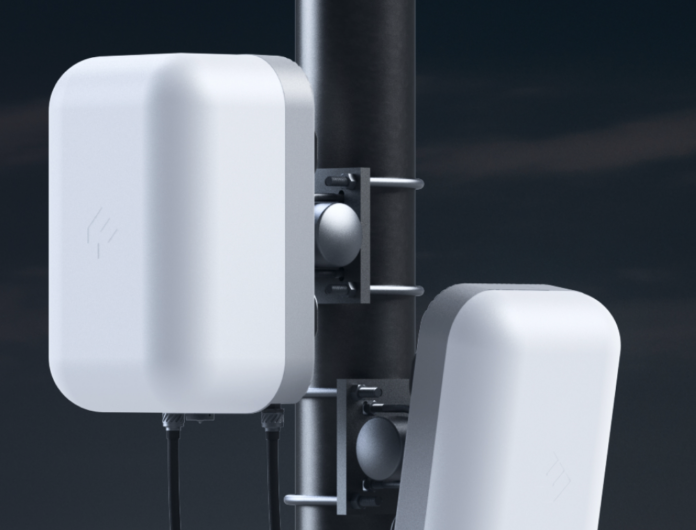Signal repeaters can offset the need for new 5G base stations, adding network density without additional infrastructure
Increasing network capacity is critical for achieving the coverage and speeds promised by 5G; but obstacles like cost, time and community objection make building out the necessary number of cell sites and base stations incredibly challenging. As a result, signal repeaters are emerging as an option to offset the need for new base stations, adding network density in terms of coverage, but not in terms of physical infrastructure. In the lightly edited conversation below, Jon Mykrantz, vice president of enterprise sales at Wilson Electronics, comments on the role of repeaters in 5G networks and what makes WilsonPro repeaters stand out.
WilsonPro’s position is that repeaters are playing a crucial role in helping to extend the entire 5G spectrum. What are some of the notable differences between repeating signal frequencies in millimeter wave (mmWave) spectrum versus lower frequency bands?
The 4G LTE low-band highway of today is being aggregated by carriers like Verizon, AT&T, T-Mobile US and US Cellular to generate performance levels that meet 5G specifications. This type of 5G is often referred to as carrier aggregation and dynamic spectrum sharing (DSS). All WilsonPro products supporting three or more bands will cover carrier aggregation 5G.
Currently available in some urban areas, mmWave brings the fastest data transmission using a massive amount of spectrum. Due to the physics of RF propagation, high-band signals have difficulty penetrating buildings or covering large distances — typically 300 to 500 feet depending on obstructions.
Are repeaters absolutely necessary to get the level of 5G coverage, at the speeds promised, that the carriers are promising? What are their perspectives on the role that repeaters will play in their networks?
It depends on the environment — hills, trees, etc. — and the building materials for the space/area needing coverage, but in general, because of the signal propagation challenges 5G has, repeaters can be used as a necessary tool for amplifying signal coverage in a poor signal coverage zone.
With midband and highband not having as much propagation, the need for indoor/outdoor [repeaters] becomes greater.
Speaking on indoors and outdoors, what are the differences between using repeaters in these two environments? Is one more challenging than the other?
Typically, outdoor cellular signal repeaters are deployed by carrier networks to enhance their coverage networks in urban areas and on the edge of service. However, with the spread of high-band 5G, we’re seeing more and more organizations line up to bring lightning-fast data transmission to their campuses.
The fastest data speeds available are also the most difficult to broadcast. High-band 5G or mmWave is rapid, but the signal deteriorates quickly. Carrier networks and large organizations who want to expand their 5G coverage outdoors can use our Network 257 to efficiently optimize coverage with less hardware and lower costs.
Indoor is more difficult compared to outdoor depending on building venue and details of what might be obstructing cell signal. You also have to consider the aesthetics that are involved with customers wanting to hide equipment .
I’ve been hearing a lot about signal repeaters lately. What makes WilsonPro’s repeaters uniquely positioned to help extend 5G coverage?
WilsonPro’s customizable cellular signal repeater solutions amplify 5G coverage inside and outside. Anywhere in the world. We use the latest in cellular signal amplification technology to enhance 5G coverage on every frequency. Our trusted, high-quality products are used in a range of industries by brands like Facebook, CHOC Children’s Hospital, Whole Foods, Hyatt Place and more. With more than 250+ patents, including multi-tower targeting, time division duplex and extended dynamic range technologies, our repeaters amplify every frequency for every device at all times.
WilsonPro Cloud also makes it easy to offer managed services with the ability to monitor and manage signal from any location. Every WilsonPro product is backed by a 5-year manufacturer’s warranty and a 30-day money-back guarantee. All of our products are designed, assembled, tested, and shipped from a US facility.
To date, Wilson Electronics has sold over 2.1 million products to improve cell signal coverage.
What 5G trends is WilsonPro keeping an eye on?
We are focusing on the emergence of 5G applications like fixed wireless access, EV charging stations, autonomous driving, POS, new streaming devices (demand on bandwidth) and IoT, as well as remote/hybrid work demands. More people are also talking about 5G, and therefore, there are more specific 5G expectations from businesses and customers.

